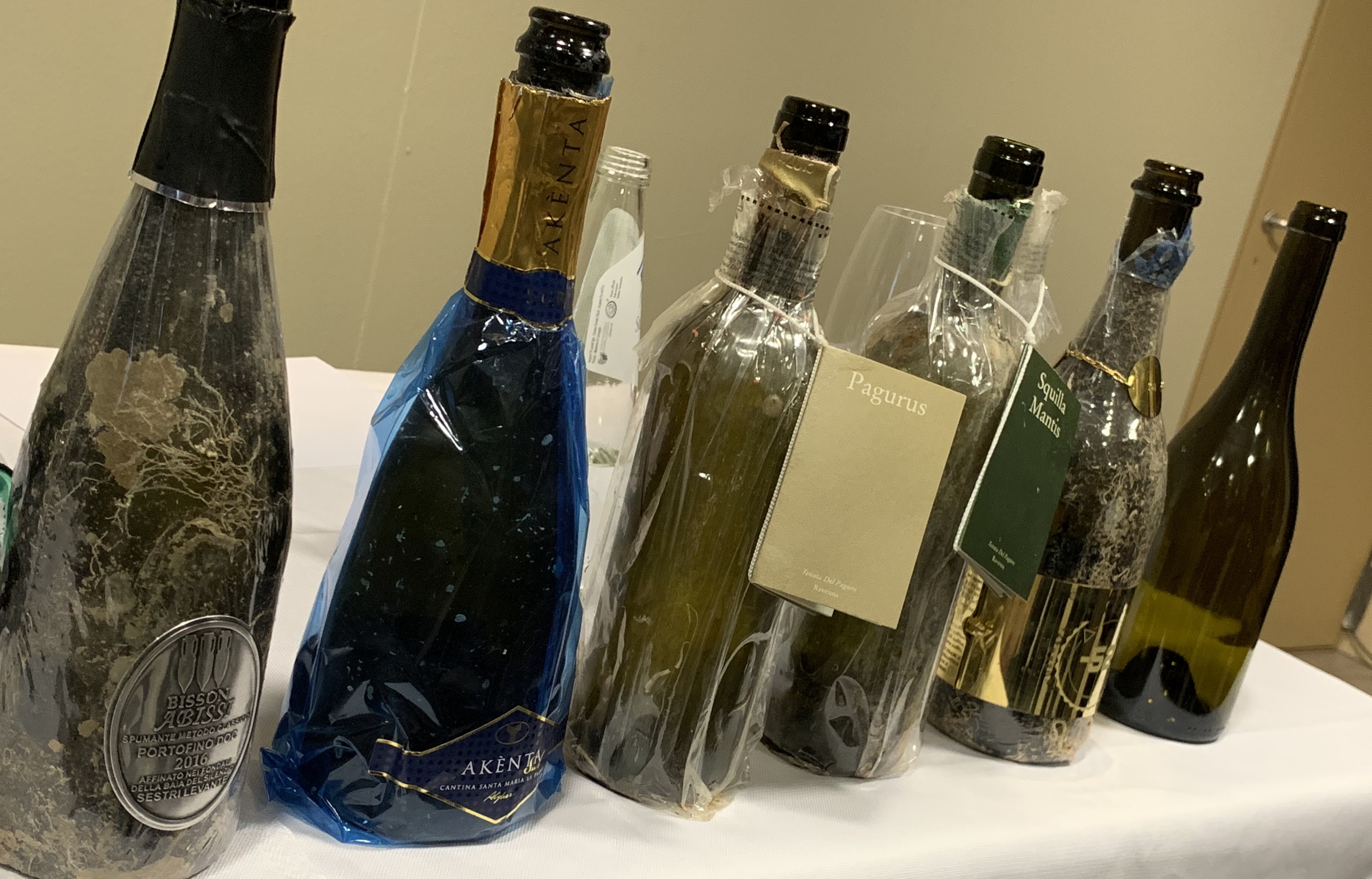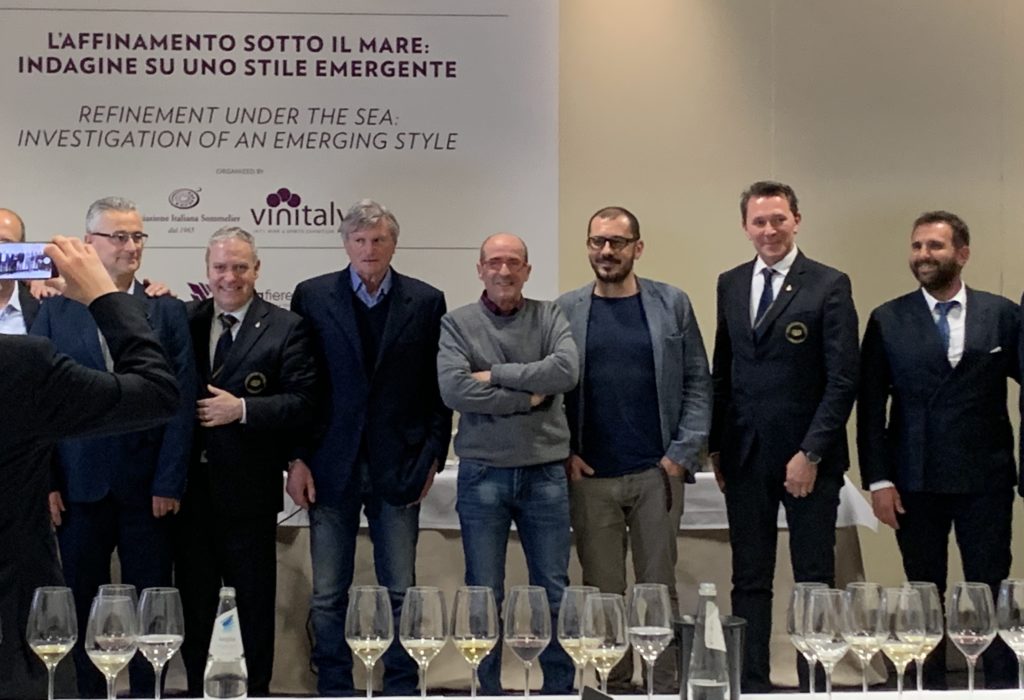
Here are the wines that refine underwater, “liquid treasures” that emerge from the sea depths, revealed for the first time in an unprecedented comparative tasting organized on April 8 by the Italian Sommelier Association at Vinitaly, the international wine and spirits fair in Verona. Antonello Maietta, National President of AIS led the exceptional wine tasting named “Refinement under the sea: investigation of an emerging style”, a journey into the abysses of the Ligurian Sea, the Tyrrhenian Sea and the Adriatic Sea that are the treasure chest of these unique bottles . “These styles cannot be easily replicated,” underlines Maietta, and “narrate the territory in which they are born, bathed by the sea that their vineyards overlook”. A style that cleverly balances innovation and experimentation, born only a decade ago and that represents a growing trend in our country.
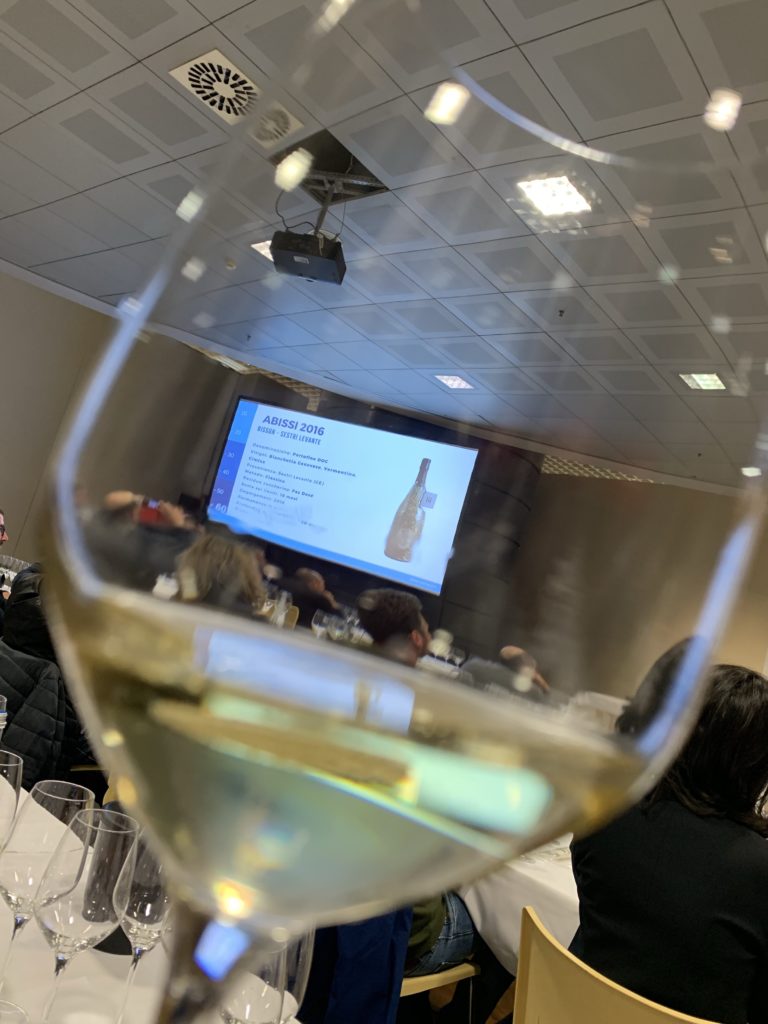
The tasting starts with the deepest wine cellar in the world, the one that holds “Abissi 2016 Bisson”: a Portofino DOC in a sparkling version with Metodo Classico, that is born on the hills of Sestri Levante (GE) from the indigenous grapes Bianchetta Genovese, Vermentino and unusual Cimixa, thanks to the passion of Pierluigi Lugano, founder of Bisson winery in Chiavari. “It was thanks to my interest in marine archeology that I discovered that wine and oil were well preserved inside the wrecks of the Greco-Roman era,” says Lugano. “So I thought of creating a cellar on the seabed of Baia del Silenzio in Sestri Levante where to refine my sparkling wine”. There, at a depth of -60 meters in the absence of light and with a constant temperature of 15 °, cradled by the currents, the 6,500 bottles of “Abyss” produced annually rest for 18 months before being recovered.
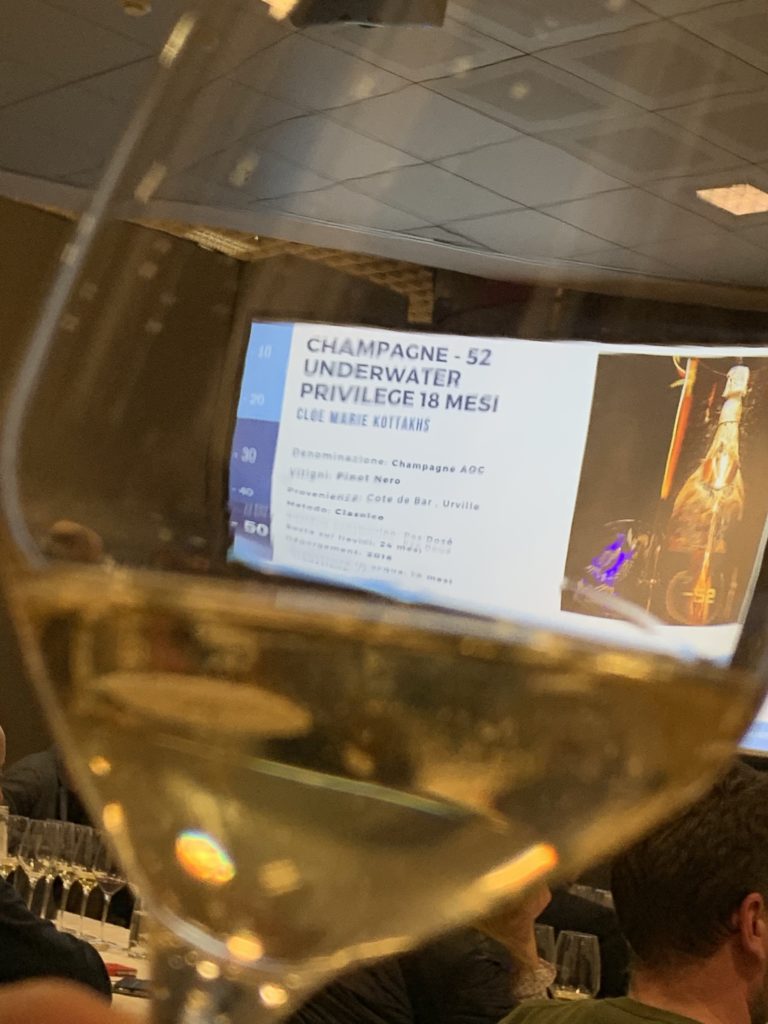
Not far away, at a depth of -52 meters on the seabed of the Marine Protected Area of Portofino, the submerged bubbles of the “Champagne -52 Underwater Privilege Cloe Marie Kottakis” are left to refine for 18 months: a pure pinot noir coming from from the Cote de Bar, Urville (France), at zero dosage, produced with Classic Method in only 3000 bottles, and protected by a cork stopper wrapped in a special sealing wax and resin capsule that lets the wine transpire. “This champagne evolves beautifully in the bottle” explains Emanuele Kottakys, CEO of Jamin, the Italian company that owns the brand, “thanks to the real principles of the cellar created by depth, such as the absence of ultraviolet rays, a stable temperature between 13 and 14 degrees and the underwater pressure that clashes and almost nullifies the pressure inside the bottle, leaving room for the oxygenating chamber”.
From the Classic to the Charmat method, with a refinement under the sea at a depth of -40 meters on the seabed of the protected marine area of Capo Caccia, for the “Akenta Sub” of the winery Santa Maria la Palma in Alghero: a Vermentino of Sardegna in a sparkling version in obtained with an energy-saving production, from grapes carefully selected and grown in the vineyards located on the Porto Conte Natural Park. The bottles of this underwater wine are equipped with a cork stopper with a special 470 steel cage that resists oxidation, protected in turn by a shellac casting.
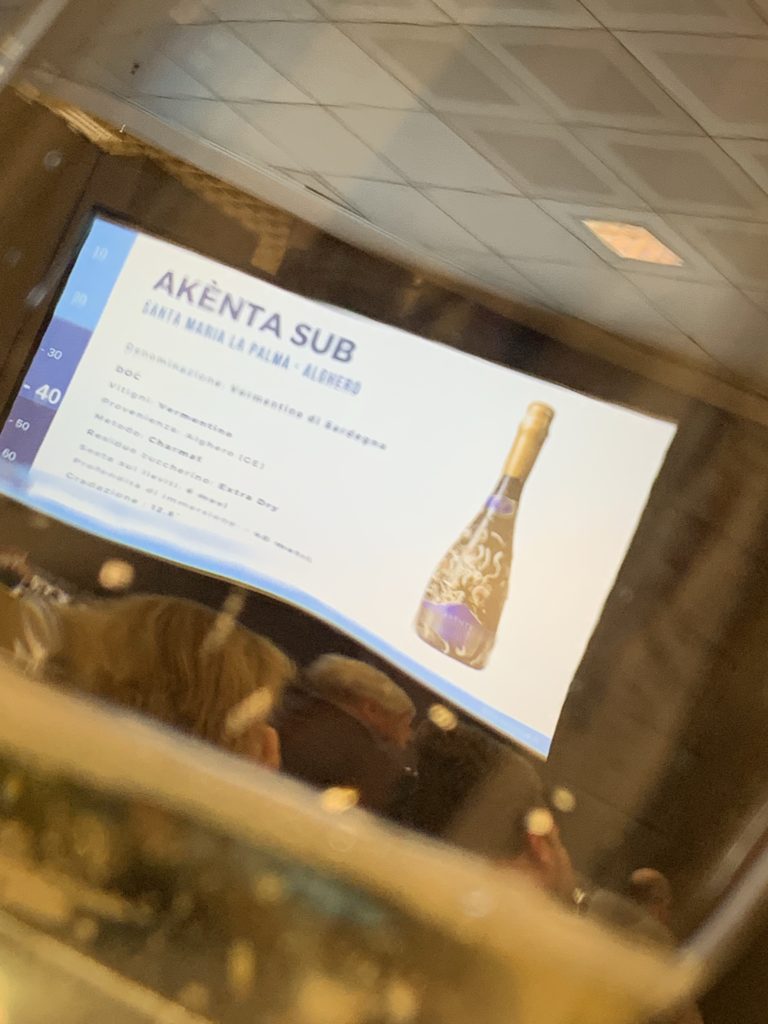
And between seaweeds, groupers and sea currents, every July, when the time of maturation has elapsed, the underwater cellar emerges from the sea, in a true celebration party with immediate tasting involving tourists and local inhabitants. “An opportunity that we have strongly wanted in order to promote the territory and to promote sustainability and respect for nature” underlines Mario Peretto, president of the Cantina di Santa Maria La Palma.
Emerging from the silence of the Adriatic Sea, are the bottles of Sangiovese and Albana from Tenuta del Paguro di Ravenna, born in 2010 from the idea of Gianluca Grilli and Raffaele Ravaglia, and sunk at -30 meters of depth: thanks to the agreement obtained with the team of underwater guides of the Paguro Association, which protects the wreckage of the Agip del Paguro platform that collapsed in 1965 in an underwater naturalistic oasis of protected species, the wines are immersed in special steel baskets stored inside the wreck . The “Squilla Mantis 2015” is a white IGT that comes from the Albana vines after a one-month fermentation in cement, a maturation of 6-8 months in French oak and Slavonia, and refinment for 18 months underwater, cradled by the tides at a constant temperature of 10-13 degrees. The “Pagurus 2015” a Sangiovese Superiore that ferments in steel for 40 days and matures 1 year in cement, remains in water 18 months, always at a depth of -30 meters. “These are wines with a unique character due to the lower exposure to light, the freshness of sea water and constant pressure, characteristics that allow an ideal and natural maturation of the product”, says Gianluca Grilli.
The Greeks of the island of Chios already knew that the seabed could represent, under certain conditions, the perfect place to give birth to a good wine: more than 2000 years ago withered the ansonica at sea, a vine originating from the Hellenic peninsula, that is now growing in the Tyrrhenian Tuscany and whose production has found a new life in 2018 on the Elba Island.
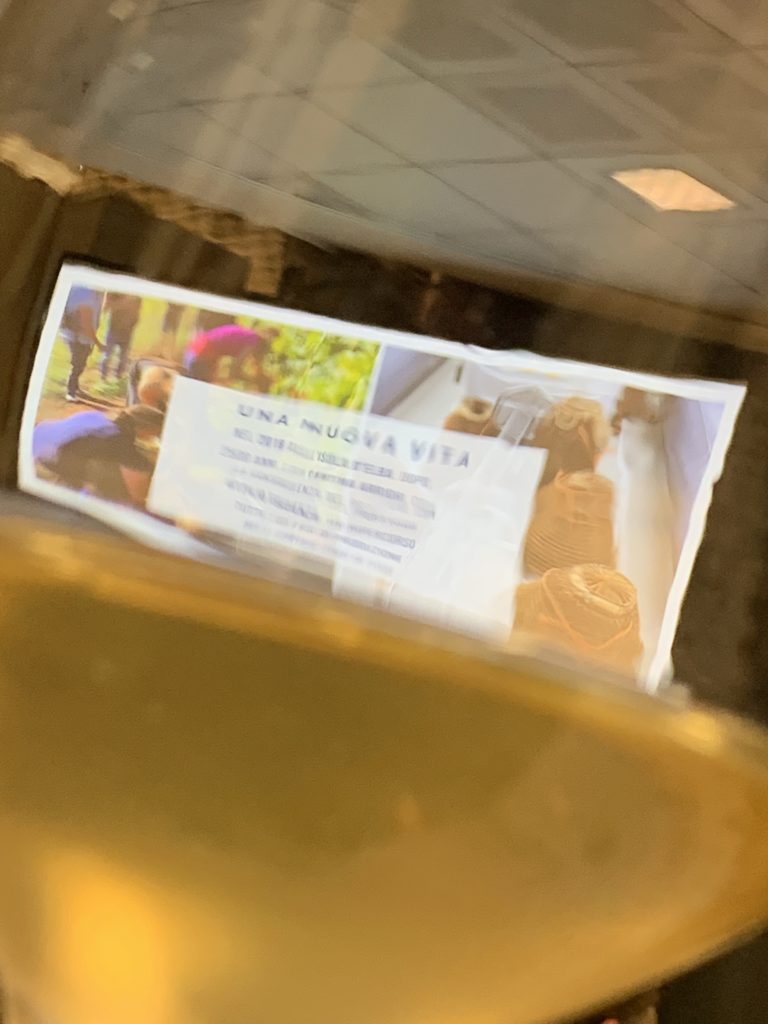
Historical research, genetics and wine innovation, thanks to the cooperation between Antonio Arrighi, winemaker of Porto Azzurro, and Professor Attilio Scienza, Professor of Viticulture at the University of Milan, are at the center of the process of creating this white wine, bottled without a label, stemming from what we can call “sea grapes”. Arrighi, with the advice of Professor Scienza (who compared the DNA of the Ansonica Elbano with the vines of the eastern Aegean finding remarkable genetic analogies) has retraced all the phases of production of the ancient wine of Chios, meticulously reproducing the ancient technique of withering of the Ansonica. An original technique that was perfected by the producers of the island of Chios: the bunches of the grapes were closed in special baskets and immersed for a few days in the sea. The immersion favored the removal of the peel’s bloom accelerating the drying and preserving the aroma of the vine. “It is a wine of 2400 years ago, literally remade with grapes that were carefully immersed in the Gulf of Porto Azzurro at a depth of about ten meters”, confirms Arrighi, “in small 40-liter amphorae, without the addition of sulphites and yeast”.
An experiment between history and oenology, which opens unexpected scenarios: one wonders if the new frontier of wine refining really lies underwater? While it is unlikely that underwater wineries will be setting up in the waters of our seas holding entire collections of wine, we may hope to soon be able to wear a diving suit and dive to recover some of the most interesting wines in the world.
